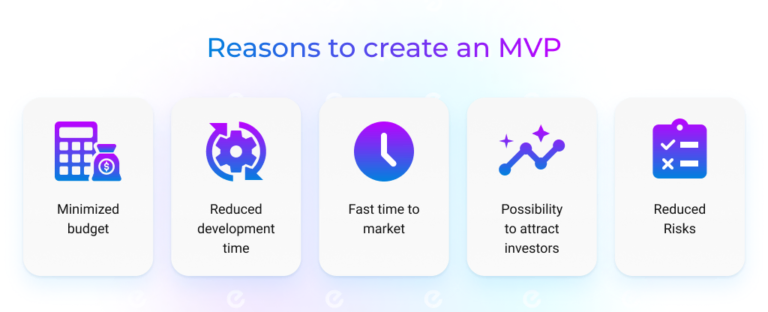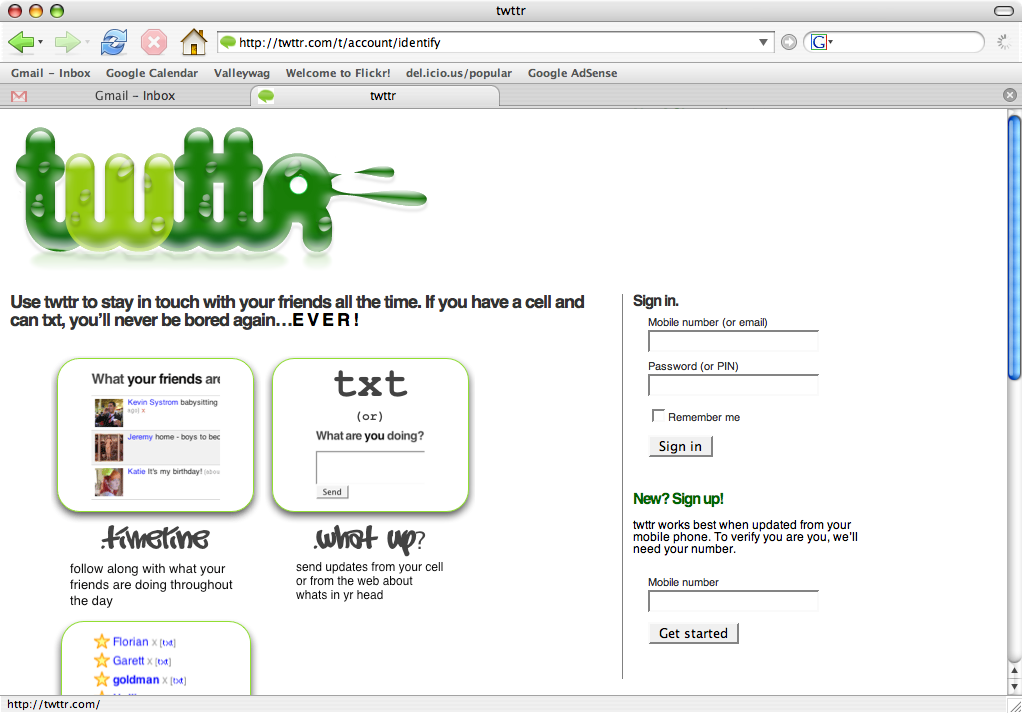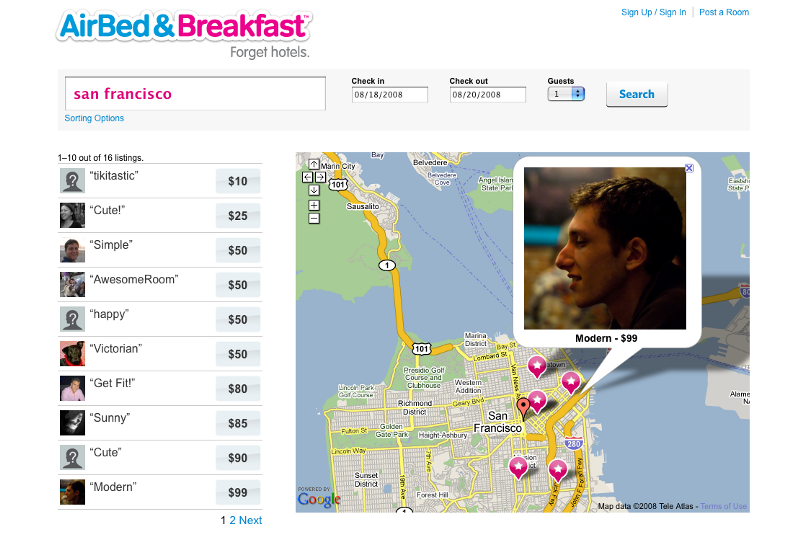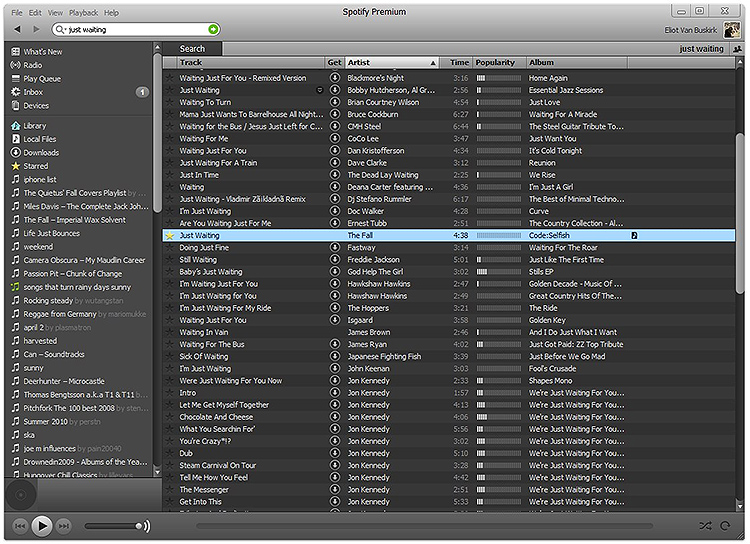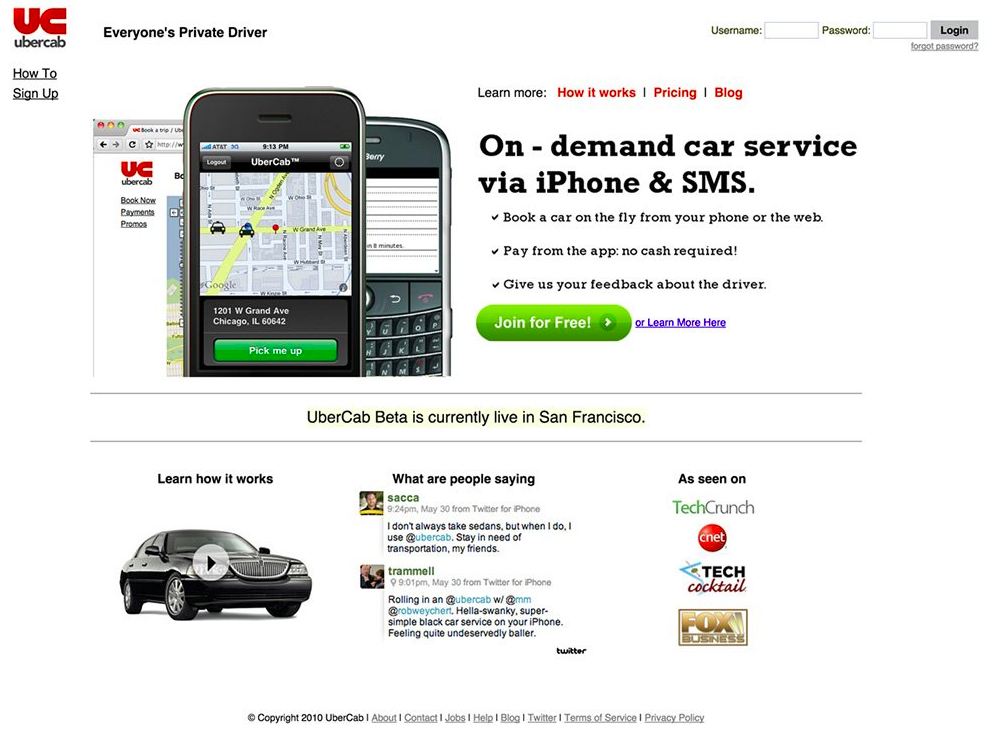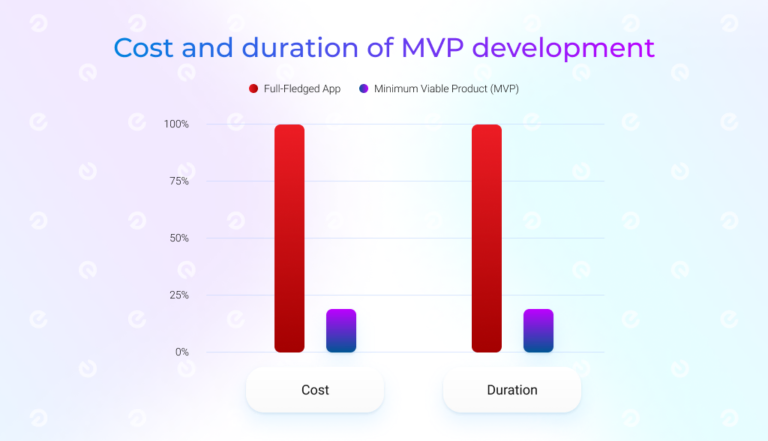
Updated: May 10, 2024
Published: February 7, 2022
What does MVP mean and why is it so important to know it if you’re planning to start your software development project? This concept is beneficial if you want to prevent your business from spending much money on a product that may appear unsuccessful. Read the article to find out how to save a company’s budget when developing an application.
Why is it so important to know the answer to “What does MVP mean?” This concept may save many startups from failures. If you’re on the brink of starting a new project, it is essential to know what is MVP in software development.
No matter how good your application is, if people don’t need it. But how to find out whether it will be helpful without building a full-fledged product and launching it? The MVP approach solves this problem. So, let’s figure out what does MVP mean in software development and how to leverage this approach to save time, budget and create a successful product.
List of the content
- What does MVP mean?
- Why do you need an MVP?
- How to create an MVP?
- Successful brands that started with an MVP
- What is MVP cost and duration?
- In conclusion
WHAT DOES MVP MEAN
So, what is MVP? MVP stands for Minimum Viable Product. Frank Robinson first formulated this concept, but its popularity has grown noticeably owing to the American entrepreneur Eric Ries. He wrote a book named The Lean Startup, where he described what distinguishes successful startups from those that face failures. MVP is one of the points that enhances the quality of a developed product and the project management itself.
The concept of a minimum viable product is sometimes confused with prototypes, though they don’t have much in common. An application prototype is a fully designed app but without the underlying logic. So, a prototype is just a visual representation of a non-functional app. MVP, in turn, is a fully functional application that contains only the necessary features and minimal visual design.
Companies usually create MVPs to gather users’ feedback most efficiently. In the long run, it leads to significant time and cost savings. The advantages of creating MVPs are pretty obvious, but let’s discuss them in more detail.
WHY DO YOU NEED AN MVP
Well, we’ve figured out what does MVP mean in software development. Now we will discuss why it is worth leveraging this approach in your project.
First off, MVPs are highly useful for large and complex applications because then there are much more options on how something can go wrong compared to a more straightforward app. For example, if you’ve spent about 1 month and $10k on development and found out that you need to change something after the launch, it is not a significant problem. However, if the development lasted for over a year and cost about $350 000, remaking even one of its parts may become a great challenge and lead to substantial budget losses.
Creating an MVP allows avoiding such setbacks. The main goal of MVPs is to collect users’ feedback to plan the following development iterations and make changes in the initial plan. For example, let’s take an MVP for a social media app like Facebook. It won’t be thoroughly designed and probably won’t contain such features as meeting planning or a Timeline feature. But it definitely will include the possibility to write posts or message other people. Once such a version is launched, the development team can see what functionality is in demand and which is not. Some features often seem helpful on the stage of planning, but once the MVP is released, developers may face the fact that the actual users don’t need them. So, the primary purpose of MVP is to gather users’ feedback to understand whether it’s worth investing in further development. So, it is an excellent opportunity to save a great deal of time and budget.
Let’s see how it works in practice. Usually, a company develops an application with a well-built main feature and launches it to the market. The first step is to understand whether the central app concept has the potential to become popular among people. If so, developers work on some more features, and then the process repeats – the feedback is being gathered, and the team makes decisions about amending or reducing the functionality. When the company hits the point where users are satisfied with the product and all features are used, the whole team improves the design and the quality of existing functionality and launches the final version of the product.
We’ve mentioned numerous times that budget and time savings are the primary reason to create an MVP. Let’s clarify how exactly it works. Suppose we want to build a taxi application. It may take the development team about 6 months and $300k to create the final version and launch it. Imagine that you’ve come all this way to release the app that people haven’t found helpful. Due to the fact that it contains numerous features, you cannot even guess which ones prevent the app from becoming popular on the market. On the other hand, you may start with an MVP that will include only the core features and minimal visual design. A simple MVP for a taxi application will cost about $60k, and the development may take only about 6-8 weeks.
Obviously, it won’t completely prevent the project from failure, and your idea may appear unclaimed. However, even in this case, consider 80% of your budget saved. There’s no point in developing complex features if the main one doesn’t work as expected and isn’t in demand among users.
Curious to know more about taxi app development?
In the post, we’ve covered the topics of the core functionality, development process, and its duration and cost.
In the case when the app is being used, but users have some complaints or improvement ideas, you keep saving the financial resources by strengthening only the most essential functions and getting rid of the unused features.
We’ve already mentioned that MVP is a great way to understand whether the idea has the potential to become popular among users. One more significant advantage is that faster time to market allows building brand recognition as soon as the first app version is launched.
Besides, an MVP with a promising idea can attract investors. Facebook would be an excellent example of it. Later in the article, we’ll look into the history of Facebook in more detail, but for now, let’s highlight that for the first 3 years that Mark Zuckerberg launched an MVP, he and his team received $3 million investments from various organizations.
To summarize, an MVP is a way to avoid the blind game and develop an app that meets the expectations and requirements of the actual users.
HOW TO CREATE AN MVP
Now we’ve figured out what is MVP and why you may want to leverage it in your project, let’s see how the development process is organized in terms of creating an MVP.
There are numerous frameworks for software development called SDLC models. They provide the team with the sequence of stages they need to follow. So, the development of any product, including MVP, follows a set of phases.
Want to know more about the SDLC models?
The article described how the software development process is organized according to a particular approach.
Read about SDLC models: Agile, Waterfall, V-Shaped, Iterative, Spiral
So, the creation of the MVP follows through the core phases of any development approach as any other type of software. They are:
- Requirements analysis
- UI/UX design
- Coding
- QA assurance
- Deployment and maintenance
The main difference between building an MVP and a full-fledged product is that MVP development is iterative. Thus, it mainly corresponds to the Agile approach. In the case of MVP, the team launches the product steadily, version by version, starting with the simplest one.
To be more specific, suppose a final product should have 20 essential features. If you were building the app in a usual way avoiding an MVP, you would launch all 20 features at the deployment stage. Since we’re talking about the MVP, the team should plan and document these twenty features and, at their discretion, even create a detailed visual design. However, when it comes to the coding stage, they implement only 3-5 of them, and consequently, launch only them. When the first app version has been on the market for some time, and the specialists have managed to gather feedback, the development stages start over. Then, a business analyst proceeds to analyze the users’ feedback, thereby adjusting the documentation and changing the initial plan.
As for the design stage, the design of all features is optional. Usually, at the very beginning, the team decides what features will be implemented first, and the designers create mockups or a prototype only for them. As for the other functionality, they confine themselves to the wireframes.
Don’t know the difference between the wireframes, mockups, and a prototype?
Read the article about application wireframing. We’ve described the difference between all these concepts and named the best tools for creating them.
So, the designers’ work after the release of the first version depends on the outcome. If the users are satisfied with the core product idea, the team launches the following few features, and the designers don’t extend beyond them.
After each iteration, specialists analyze gathered data to make changes in the initial plan and follow its updated version. After a few successful iterations, the final product is released.
However, the development isn’t limited by software deployment. It continues with support and updates. Support lies in a coordinated response to the emerging problems. No matter how well the software has been developed and tested, unexpected bugs are almost inevitable. So, the programmers should always be ready to fix them and deliver a properly functioning product.
Operations that fall under the notion of support are most often unanticipated. As for the updates, they are planned at the very beginning of the development. So, the team follows the original plan of updates. Of course, it often happens that the team should react to the problems that arise after the app is released and change the frequency of updates. By the way, MVP is an excellent example of the Iterative model, which belongs to the family of Agile processes.
To sum everything up, let’s see what you should do if you want to create a successful minimum viable product:
- Perform the market research
- Shape up your ideas
- Develop an MVP (form the documentation, design UI/UX, code the main part, test the software, release the product)
- Gather users’ feedback and analyze it
- Go through the development stages again
We’ve already described how the development is organized, but we haven’t mentioned the market and customer study though it’s essential for product creation. You may test your idea after the launch as the MVP concept suggests, but it’s worth investigating the market before you start the development.
It would help if you considered the uniqueness of your future application. If there are too many apps with the same concept, it would be rather challenging to beat the competition. Though, you can always come up with exclusive ideas that no one haven’t thought of before and make your app take the top charts of the software market.
Another situation is when you cannot find applications with a concept similar to yours. At first, it might seem like an excellent opportunity to occupy a particular niche and have no competitors at all. However, considering the speed that the IT world evolves with, it is a bit suspicious that there’s not a single person that would come up with an idea resembling yours. Of course, it may actually be a unique available niche, but it’s worth remembering that, most likely, a particular concept may not be popular among people.
Still, if you cannot find the competitors, but the idea seems reasonable, find a market analyst and a business analyst. They will find all the possible pitfalls and the possibilities to create a unique product.
Shaping up and specifying your ideas partly relates to the development process. But let’s clarify how it works. The documentation usually starts with the user stories and acceptance criteria. In short, they are means to identify user requirements in detail and define the scenarios, meaning describing all possible outcomes of the users’ actions.
Want to know more about acceptance criteria?
In the article, you’ll find the acceptance criteria definition and templates and some practical, explicit examples of writing it and forming user stories.
Read to find out what are acceptance criteria and how to write it
In terms of the topic of “What does MVP mean and how to create it?” we should stress out some common pitfalls so you can avoid them.
First off, an MVP is often mistaken for an MMP meaning a minimum marketable product. The first one focuses on learning information about users after the launch, while an MMP focuses on increasing the earning potential of a product. So, confusing these two terms may lead to a wrong strategy, and therefore, the absence of the expected outcome.
Secondly, some companies think that launching an MVP means releasing a product with a minimal amount of features and stopping the development at this point. However, all power of MVP lies in constant improvements and not in delivering a bearable app with poor design and user experience.
So, it is imperative to know what does MVP mean before proceeding to the development itself.
How to launch an MVP product?
Want to know more about MVP development? Read the article to find out detailed information about all development stages, and tips on how to pass them. We’ve also used the app we’ve created to illustrate what features the MVP usually implies.
Well, now we know the core steps to build a successful MVP. To prove the usefulness of creating a minimum viable product, let’s see what world-known brands started with an MVP.
SUCCESSFUL BRANDS THAT STARTED WITH AN MVP
There’s a common misconception that MVPs are significant only for startups. However, huge companies were once a startup, and they knew what does MVP mean and how to use it. Let’s familiarize ourselves with the world-famous brands that released MVPs before becoming the tech giants.
Look at the picture below, and say, would you believe that the most popular app on the Internet looked like this when it was first launched?
Initially, it was called Thefacebook and was created by Mark Zuckerberg on his own. The idea of connecting students from Harvard University lay in its basis. The website was supposed to show students from particular groups, one’s friends’ friends, etc. So, Zuckerberg created a simple website and provided access to the Harward students.
This social platform became so popular that it spread to other universities and was named Facebook. Knowing what does MVP mean has led the company to become the biggest social media platform. During the first years of its existence, it received $3 million of investments, and now it has more than 1.3 billion active users per month. As we can see, an MVP in the form of a simple one-page website can become the most popular social network globally.
Twitter, originally called Twttr, was designed to gather people in small groups and share news within them. These groups were united mainly by the work or study place criterion. Twitter allowed 140-character posts that included hashtags.
You can see its first design in the picture below:
Since its first release in 2007, it received $155 million of investments and gained immense popularity, and now includes about 300 million active users.
Airbnb
Airbnb was once Air Bed&Breakfast. Its initial goal matches the current one – rent apartments without intermediaries. It started when Brian Chesky and Joe Gebbia created a simply designed website that you can see in the picture below:
They rented an apartment, took its photos, and uploaded them to the website so people could decide whether they wanted to live there or not. The website also contained a straightforward booking form.
The idea to create such a website hasn’t come from nowhere. That year, there was held a design conference in San Francisco. So, they knew that many people would be looking for a place to stay for a couple of days.
Their concept became so popular that they approached website development and advertising seriously, and today, Airbnb is the number one rental service.
Spotify
Another brand that knew what does MVP mean and used this knowledge was Spotify. It is an excellent example of how important it is to consider the market situation when creating a product or service. When the idea to make a platform for listening to music was born, the situation in the music industry was rather unfortunate. The physical media sales were steadily decreasing, the peer-to-peer music sharing service Napster was already dead, and the radio still wasn’t that popular at that time. There existed some services for music streaming, but they used pirate versions with poor quality, and people needed a decent replacement for them. And there appeared Spotify.
Startupers from Sweden create an application with minimal design but sufficient functionality to attract users. You can see the first Spotify version in the picture below:
There was no competition to beat at that time, but Daniel Ek – its creator, wanted to make everything the best way. So, he needed to invest at least something to deal with licensing so that people could avoid piracy and listen to official music.
As soon as the MVP was launched, Ek offered some artists to try it out, and then, the popularity of Spotify skyrocketed, and significant investments were made.
Since 2011, the development team of Spotify has constantly made improvements added new features, and today, it is the most famous music streaming service with numerous personalization features.
Uber
Uber, initially UberCab, is one of the first ridesharing services that differed from the original taxis.
It was initially created as an application, and the main functionality remains the same until today. However, many features present in today’s Uber were absent in the MVP. For example, location sharing, drivers’ calls, car categories, etc.
Besides, the design wasn’t as impressive as it is today. See it yourself:
So, from an app with minimal functionality, Uber has grown to the most prominent car-sharing service that operates in more than 600 cities all over the world.
COST AND DURATION OF BUILDING AN MVP
When we know what does MVP mean and how to create it, let’s talk about the development duration and its approximate cost.
It’s unreasonable to use the “one size fits all” approach to name the duration and cost of creating an MVP. The thing is that these numbers depend heavily on a variety of factors, including:
- Application complexity
- Platform
- Developers’ location
- Team size
- Number of app components
We can add to this list many more points, but you’ve already caught the idea.
If you opt for outsourcing, you’ll face significantly ranging development rates. The hourly rates may vary from $15 in Southern Asia to $175 in North America.
As for the team size, the more people in the team, the more it will cost. However, with a bigger group, you may count on faster development. If you reduce the number of team members, the development cost will decrease, but the duration will increase to some noticeable extent.
So, let’s talk about the duration and cost of creating an MVP. As we’ve said, we cannot name strictly defined numbers, but the cost of MVP always contains about 20% of the price of a full-fledged finished app. The exact ratio concerns the development duration.
For example, if the application costs $200k and the development takes 6 months, these numbers will constitute $40k and 5 weeks for an MVP.
Suppose we’re talking about the average application without any complex functionality. In that case, we can presume that the price of an MVP can vary between $15k to $50k, and the duration of development may constitute 3-8 weeks.
CONCLUSION
Well, now we know not only what does MVP mean but also how to leverage this knowledge to make your startup skyrocket and possibly become the next Facebook or Uber.
MVP helps to evaluate the market situation and understand the right direction to move. It is also a great way to save budget and time if you’re not entirely sure about your product’s idea.
Have some more questions on MVP or want to create one?
Existek commends a well-considered approach to application development. That’s why we often started with MVPs and now have extensive experience in this sphere. Get in touch with our specialists if you want to estimate your future product or build an MVP right away.
Frequently asked questions
What does MVP mean?
MVP stands for a minimum viable product. This term is used to describe applications with minimal visual design. Such an app contains only the core features. It is used to gather users' feedback to constantly adjust the development plan, and as a result, deliver a solution that meets people's requirements.
What are the reasons to create an MVP?
The most common reasons why software companies decide to develop an MVP are time and budget savings. This is achieved due to the fact that MVP contains only the core features and minimal design. However, brand recognition, reduced risks, and faster time to market are among other significant advantages of an MVP.
How much does it cost to build an MVP?
This is nearly impossible to calculate the accurate price of an MVP app because its complexity is directly proportional to the complexity of a full-fledged app. However, if you want to estimate the approximate price of an MVP, remember that the cost of MVP comprises about 20% of a final app version cost.

